Stabilizing THCA Genetics: How Long Does It Take to Create a New Strain?
Every month, it seems like dozens of new cannabis strains hit the market, each one promising unique characteristics and exceptional qualities. But here's a question that most consumers never ask: is that "new strain" actually stable, or is it just an untested cross being rushed to market?
The difference between a cross and a stable strain is everything. A simple cross between two parent plants—what breeders call an F1 hybrid—might produce interesting offspring, but those genetics won't breed true. Plant a seed from an F1, and you'll get wildly different results. Meanwhile, stabilizing THCA strains to the point where they produce consistent, predictable offspring takes years of dedicated work.
Why does THCA genetic stability matter? For consumers, stable genetics mean consistency. You know what you're getting every time. For growers, it means predictable cultivation outcomes—no surprises in growth patterns, flowering time, cannabinoid profiles, or yield. For the industry as a whole, it means building a foundation of reliable cultivars that can be depended upon for years to come.
But here's the reality check: truly creating a stable THCA strain takes 4-7 years of dedicated breeding work. If someone tells you they've developed a "new strain" in 12-18 months, what they really mean is they've made a cross and selected a few interesting phenotypes. There's nothing inherently wrong with that—some F2 and F3 generations produce exceptional plants—but consumers deserve to understand what they're buying.
In this comprehensive guide, we'll explore the actual timeline and process behind THCA strain development time, break down what happens in each generation, and help you understand why patience is the most undervalued virtue in cannabis breeding.
Understanding Genetic Stability: What Does It Actually Mean?
Before we dive into timelines, we need to understand what breeders mean when they talk about "stable cannabis genetics." This isn't just marketing jargon—it's a specific genetic state that determines whether a strain will reproduce itself faithfully or throw out unpredictable variations.
Homozygous vs. Heterozygous Traits
At the genetic level, stability comes down to whether traits are homozygous (having two identical alleles for a trait) or heterozygous (having two different alleles). Think of each trait as controlled by a pair of genetic instructions, one from each parent.
When both instructions are identical (homozygous), the offspring will consistently express that trait. When they're different (heterozygous), you get variation—sometimes one trait shows, sometimes the other, sometimes a blend.
In F1 hybrids, almost everything is heterozygous. That's why F1s often show "hybrid vigor"—they're pulling from diverse genetic backgrounds. But it's also why F1s are inherently unstable. Breed two F1s together, and their offspring (F2) will segregate into countless combinations, expressing traits from both grandparents in unpredictable ways.
Phenotypic Uniformity: The Goal of Stabilization
When breeders talk about stable THCA genetics, they're aiming for phenotypic uniformity—the ability to grow out a pack of seeds and see consistent traits across the population.
True breeding status means:
- 95%+ of plants express the desired traits
- Cannabinoid profiles remain within tight ranges
- Growth structure, flowering time, and yield are predictable
- Terpene profiles maintain consistency
- Plants breed true to type when crossed with themselves
This is the difference between professional breeding and backyard pollen chucking. Achieving this level of uniformity across all important traits simultaneously is what takes years of dedicated work.
Why F1 Hybrids Aren't Stable (But Can Still Be Excellent)
Here's where things get nuanced: F1 hybrids can produce phenomenal cannabis, but they're not stable. The F1 generation often shows incredible vigor, potency, and unique trait combinations. Many of the world's most beloved strains are F1 hybrids or have been maintained as clone-only lines precisely because the genetics are heterozygous and difficult to reproduce from seed.
The instability of F1s isn't a flaw—it's a feature if you're a breeder looking for variation to select from. But it means you can't expect to plant F1 seeds and get uniform results, which matters for both commercial cultivation and consumer experience.
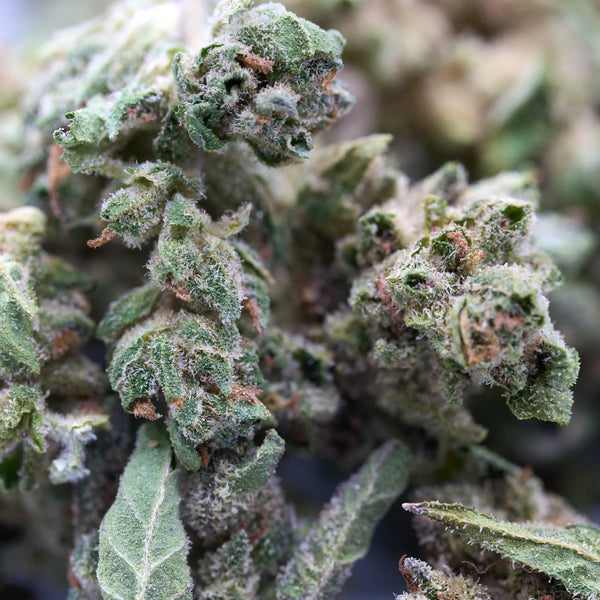
The Generation Breakdown: Understanding F1, F2, F3, and Beyond
The journey from initial cross to true breeding THCA strains follows a predictable path through multiple filial generations. Each generation serves a specific purpose in the stabilization process, and understanding this progression is key to appreciating THCA breeding years required.
P Generation: Parent Plant Selection (Months to Years)
Everything starts with the P (parental) generation. Before making that first cross, skilled breeders spend months or even years evaluating potential parent plants. They're looking for:
- Exceptional cannabinoid profiles, especially high THCA content
- Desirable terpene combinations
- Strong structure and growth vigor
- Pest and disease resistance
- Appropriate flowering times
- Yield potential
- Stability in the parent's own lineage
This selection phase is often overlooked but critical. Starting with unstable or poorly selected parents means fighting an uphill battle through every subsequent generation. The best breeders work with parent stock that's already been line-bred for consistency, giving them a head start on stabilization.
F1 Generation: The First Filial Cross
When those carefully selected parents are crossed, the result is the F1 (first filial) generation. This generation shows several distinctive characteristics:
Hybrid Vigor (Heterosis): F1s often display increased growth rate, yield, and potency compared to either parent. This is because they're benefiting from diverse genetic backgrounds while masking recessive weaknesses.
High Uniformity Within F1: Interestingly, F1 plants tend to be fairly uniform with each other because they all share the same combination of genetics from both parents. All F1 siblings are essentially getting the same mixed bag of traits.
Total Heterozygosity: Under the hood, F1s are carrying heterozygous alleles for most traits. This dormant variation will explode in the next generation.
Commercial Value: Many seed companies release F1 hybrids because they offer that uniformity and vigor while being impossible for customers to reproduce accurately (protecting the breeder's genetic investment).
F2 Generation: Where the Chaos Begins
Breed two F1 plants together (or self-pollinate an F1), and you get the F2 generation—where things get wild. This is where Mendel's laws of inheritance become beautifully, frustratingly visible.
Massive Trait Segregation: All those heterozygous alleles in the F1 parents start separating and recombining. You might pop 100 F2 seeds and see 100 different phenotypes. Some look like one grandparent, some like the other, many like something in between.
Hidden Traits Emerge: Recessive traits that were masked in the F1 generation suddenly appear. This can be exciting (finding that one amazing phenotype) or disappointing (unwanted traits reemerging).
Selection Opportunity: For breeders, F2 is where the real work begins. This is the generation where you're hunting through populations to find the individuals that express your target trait combination.
Population Size Matters: Working with F1 F2 F3 THCA strains effectively requires large population sizes. In F2, you need to grow out 100-200+ plants to see the full range of genetic potential and make informed selection decisions.
F3 Generation: Beginning of Stabilization
The F3 generation is where you start seeing progress toward stability, assuming you made smart selections from the F2 population. By breeding your selected F2 parents together, you're beginning to:
Fix Desired Traits: With each generation of selection, you increase the frequency of desired alleles and decrease unwanted ones. F3 populations show less variation than F2, though still considerable diversity.
Eliminate Outliers: Extreme phenotypes from both directions tend to decrease. You're narrowing the range of expression.
Assess Progress: F3 is often when breeders can assess whether their selection strategy is working or if they need to revise their approach.
Still Not Stable: While better than F2, F3 generations are not yet stable enough for commercial release as "true-breeding" strains. You'll still see significant variation in a seed pack.
F4 Generation: Increasing Uniformity
By F4, you should be seeing real progress toward THCA genetic stability. If you've maintained strong selection pressure through F2 and F3:
60-70% Uniformity: A significant majority of plants should express the target trait package, though variation still exists.
Reduced Segregation: The wildly divergent phenotypes of F2 are largely gone. Plants are clustering around your desired ideotype.
Predictable Outcomes: You can start making reliable predictions about what percentage of seeds will produce your target type.
Commercial Consideration: Some breeders begin releasing strains at F4, particularly if they've achieved acceptable uniformity for key traits. This is where market pressure often conflicts with the goal of perfect stabilization.
F5+ Generations: Achieving True Breeding Status
F5 and beyond is where strains become true breeding THCA strains. At this point:
90-95%+ Uniformity: The overwhelming majority of seeds produce plants matching the target description.
Homozygous for Key Traits: The important characteristics are locked in at the genetic level. These plants will reliably pass their traits to the next generation.
Breeding Tool: True-breeding lines become valuable tools for creating new F1 hybrids or continuing further breeding projects.
Years of Work: Reaching F5+ represents 4-6 years minimum of dedicated breeding stable THCA work, often longer.
Not Perfect: Even F5+ strains show some variation. Perfect uniformity is rare in cannabis, which is an outcrossing species with high heterozygosity even in wild populations.
Realistic Timeline for Strain Development: The THCA Strain Timeline
Let's break down what actually happens, year by year, when developing stable genetics. This timeline assumes outdoor growing or light-dep greenhouse work (one generation per year). Indoor facilities can potentially run 2-3 cycles per year, accelerating the process but not eliminating the need for multiple generations.
Year 1: Parent Selection and Initial Cross
Spring: Final parent plant selection and initial cross. This might involve growing out candidate parents from seed or evaluating existing genetics.
Summer: F1 seeds develop. Parent plants are evaluated under various conditions.
Fall: F1 seeds harvested, dried, and stored.
Winter: Planning for Year 2, potentially getting a head start on F1 grow under lights.
Key Tasks:
- Document parent plant characteristics thoroughly
- Collect and organize F1 seeds
- Begin planning selection criteria for F2
- Secure growing space for larger populations
Year 2: F2 Population and Heavy Selection
Spring: Grow out 100-200+ F1 plants to produce F2 seeds.
Summer: Observe and document the relatively uniform F1 generation. Make male and female selections for F2 production.
Fall: Harvest massive quantities of F2 seeds. F1 plants are fairly uniform, but you're producing seeds that will be highly variable.
Winter: Germination testing, planning for large F2 population grow.
Key Tasks:
- Produce sufficient F2 seeds (thousands)
- Document F1 characteristics
- Refine selection criteria based on F1 observations
Year 3: F2 Chaos and Beginning Stabilization
Spring: Grow out 200-500 F2 plants—this is where you need space and patience.
Summer: Observe massive phenotypic variation. This is the make-or-break generation for strain development. Select the 5-10% of plants that best express your target traits.
Fall: Breed selected F2 parents to create F3 seeds. This is intensive work—you're evaluating hundreds of plants for dozens of traits.
Winter: Document findings, assess whether selection strategy is working, plan F3 evaluation.
Key Tasks:
- Rigorous phenotype selection
- Detailed documentation and photography
- Lab testing of top candidates
- Create F3 seeds from best combinations
Year 4: F3 Verification and Continued Selection
Spring: Grow 100-200 F3 plants to assess stabilization progress.
Summer: You should start seeing reduced variation compared to F2. Continue selection but with refined criteria focused on the traits showing inconsistency.
Fall: Produce F4 seeds from top F3 selections.
Winter: Data analysis, compare F3 performance to F2, adjust strategy if needed.
Key Tasks:
- Assess whether stability is improving
- Make tougher selection decisions
- Begin limited testing with trusted growers
- Produce F4 seed stock
Year 5: F4 Evaluation and Pre-Release Testing
Spring: Grow F4 population (50-100 plants) for stability verification.
Summer: If you've done the work right, you should see 60-80% uniformity. Plants should be clustering around your target ideotype.
Fall: Final round of F5 seed production from the most uniform F4 parents.
Winter: Final testing, including sending seeds to multiple test growers in various environments.
Key Tasks:
- Extensive lab testing across multiple samples
- Field testing in diverse growing conditions
- Gather feedback from test growers
- Begin preparing for potential release
Year 6-7: F5 Release Preparation and Verification
Spring: Grow out F5 seeds in multiple locations simultaneously.
Summer: Verify that 90%+ of plants meet standards. Final selection of the absolute best parents for future seed production.
Fall: Produce release-quantity F5 seeds. Begin ramping up seed production.
Winter: Marketing preparation, educational materials, grower guides.
Key Tasks:
- Final quality control
- Seed increase for commercial production
- Develop comprehensive strain profiles
- Create growing guidelines
Total Time Investment: 5-7 years minimum for how long create THCA strain that's truly stable.
Why Some "New Strains" Are Released Earlier
Market reality means many strains hit the market at F2 or F3. This isn't necessarily wrong, but consumers should understand what they're getting:
F2 Releases: Essentially "phenotype hunting packs." You're buying the opportunity to find something special, but consistency isn't guaranteed.
F3 Releases: Show more stability than F2 but still considerable variation. Can be appropriate for experienced growers who enjoy selection.
F4 Releases: Represent a middle ground between stability and market timing. If well-bred, F4s can perform admirably for commercial cultivation.
The honest breeder will tell you what generation you're buying. The THCA strain development time invested correlates directly with the consistency you'll experience.
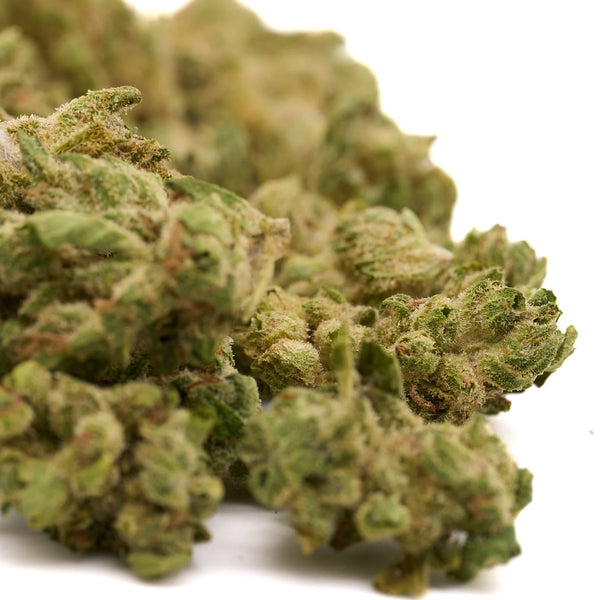
Backcrossing for Stability: The BX Strategy
Sometimes the path to genetic stabilization cannabis involves backcrossing—breeding offspring back to one of the parent plants. This is abbreviated as BX (backcross), with numbers indicating how many times: BX1, BX2, BX3, etc.
What Is Backcrossing?
THCA backcrossing involves taking a hybrid offspring and breeding it back to one of its parents (or a parent-type plant). With each backcross, you increase the genetic contribution from that parent while retaining some traits from the other parent.
The math works like this:
- F1: 50% Parent A, 50% Parent B
- BX1: 75% Parent A, 25% Parent B (if crossing back to Parent A)
- BX2: 87.5% Parent A, 12.5% Parent B
- BX3: 93.75% Parent A, 6.25% Parent B
When to Use Backcrossing Strategies
Backcrossing is particularly useful when:
Stabilizing a Specific Trait: You've found one exceptional plant with a rare trait (extreme THCA production, unique terpene profile) and want to create a seed line that reliably expresses that trait.
Reconstructing Clone-Only Genetics: Many famous strains exist only as clones. Breeders can cross that clone with something else, then backcross to recreate seed versions that express most of the clone's traits.
Reducing Variation Quickly: BX approaches can stabilize target traits faster than purely filial breeding, particularly when working with a well-selected recurrent parent.
Maintaining Unique Chemotypes: If Parent A has an exceptional cannabinoid profile, backcrossing ensures that chemistry remains dominant while introducing minor improvements from Parent B.
The BX Numbering System
BX1: The first backcross. You've taken an F1 hybrid back to one parent. This is still fairly heterozygous and will show variation, but it's starting to favor the recurrent parent's traits.
BX2: Second backcross. Now you're at 87.5% of the recurrent parent's genetics. You should see significant stability for that parent's dominant traits.
BX3: Third backcross. At this point, you're essentially recreating the recurrent parent with minor genetic contributions from the other parent. Some breeders continue to BX4 or even BX5 for maximum stability.
Limitations of Backcrossing
While powerful, backcrossing has drawbacks:
Reduced Genetic Diversity: Heavy backcrossing narrows the gene pool, potentially reducing vigor over time.
Recessive Issues: If the recurrent parent carries hidden recessive problems, intensive backcrossing can make those more likely to express.
Not Always Faster: While backcrossing can stabilize specific traits quickly, achieving overall stability across all characteristics may take just as long as filial breeding.
Selection Still Required: You can't just blindly backcross. At each BX generation, you need to carefully select which offspring to use in the next cross.
Combining Backcrossing with Filial Generations
Many breeders use hybrid strategies: BX to stabilize key traits, then switch to filial breeding for final stabilization. For example:
- Create F1 hybrid
- BX1 to stabilize high THCA trait
- BX2 to further lock in THCA genetics
- Open pollination of BX2 to create BX2F2
- Continue with filial generations for overall stability
This combined approach is how many modern stabilizing THCA strains are developed, offering both speed and thoroughness.
Methods to Accelerate Stabilization
While there's no substitute for generational selection, several techniques can speed up the THCA strain timeline:
Large Population Sizes
The most important accelerator is population size. Growing 500 F2 plants instead of 50 gives you:
- Better statistical representation of genetic possibilities
- Higher probability of finding exceptional combinations
- More accurate assessment of trait frequencies
- Better selection differential (choosing from a larger pool)
Commercial breeders often work with populations of 1,000-10,000 plants per generation, dramatically improving selection efficiency compared to small-scale breeding.
Aggressive Selection Pressure
Be ruthless in selection. Instead of keeping the top 50% of plants, keep only the top 5-10%. This dramatically accelerates the shift in allele frequencies.
The trade-off is reduced genetic diversity, but when stabilizing specific traits, aggressive selection pressure can cut development time by a year or more.
Multiple Grow Cycles Per Year
Indoor facilities with light control can run 2-3 generations per year instead of one. This doesn't eliminate the need for multiple generations, but it compresses the timeline:
- Indoor acceleration: 2-3 years for F5 instead of 5-6
- Light-dep greenhouse: 2 generations per year, reaching F5 in 3-4 years
- Outdoor breeding: One generation per year, requiring 5-6 years for F5
The catch? Running multiple generations per year is expensive and labor-intensive. It requires dedicated facilities, staff, and significant capital investment.
Marker-Assisted Selection
DNA testing can identify desirable genes before plants flower. Instead of waiting months to see if a plant produces high THCA, breeders can test seedlings and cull those lacking the genetic markers for target traits.
This is still emerging technology in cannabis, but it offers tremendous potential:
- Sex determination from seedlings
- Early detection of cannabinoid synthesis genes
- Disease resistance markers
- Terpene profile prediction
Cost is currently prohibitive for small breeders (hundreds to thousands per test), but as technology advances, marker-assisted selection will become standard practice in professional breeding programs.
Tissue Culture for Rapid Cloning
Tissue culture allows rapid multiplication of selected plants without waiting for them to grow large enough for traditional cloning. A single meristem can generate hundreds of identical clones within months.
Benefits for breeding:
- Preserve valuable selections while continuing breeding
- Test selections in multiple environments simultaneously
- Maintain genetic libraries without large mother plant rooms
- Accelerate field testing phases
Tissue culture requires sterile lab conditions and expertise but is increasingly accessible through specialized service providers.
Professional Facilities vs. Home Breeding Timelines
Reality check: Home breeders take longer. That 5-7 year timeline assumes professional facilities with:
- Climate-controlled growing environments
- Adequate space for large populations
- Staff to manage large plant counts
- Lab testing capabilities
- Documentation systems
Home breeders face constraints that extend timelines:
- Limited space (50 plants vs. 500)
- Single annual outdoor cycle
- Fewer resources for testing
- Time constraints from day jobs
A realistic home breeding timeline to F5 might be 7-10 years. There's no shame in this—some of cannabis's best genetics came from passionate hobbyists who took their time and did it right.
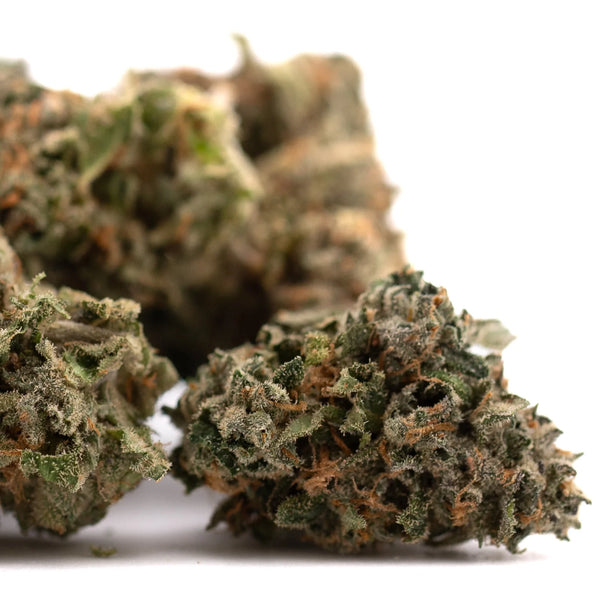
Testing for Stability: How to Verify Your Work
Reaching F5 doesn't automatically mean you have stable cannabis genetics. You need to verify stability through rigorous testing.
Growing Out Seed Batches
The proof is in the grow. Pop 50-100 seeds from your F5 generation in multiple environments:
- Indoor controlled environment
- Outdoor in your region
- Test grows in different climate zones
- Various nutrient programs
- Different training methods
True stability shows consistency across all these conditions. If your "stable" strain performs uniformly indoors but throws variation outdoors, you haven't fully stabilized genes related to environmental response.
Measuring Phenotypic Variation
Quantify, don't just observe. Track specific measurements:
- Plant height at specific growth stages
- Node spacing uniformity
- Flowering time (days to harvest)
- Yield per plant (and variance)
- Bud structure and density
- Trichome development patterns
Calculate standard deviations and coefficients of variation. A truly stable strain should show low variation in all key traits. If height varies by 50% across your seed population, you need more work.
Statistical Analysis of Traits
Apply actual statistics to your breeding program. Professional breeders use:
- Mean and standard deviation for continuous traits (height, yield, cannabinoid content)
- Chi-square tests to verify expected trait ratios
- Heritability estimates to understand genetic vs. environmental influence
- Coefficient of variation to compare relative variability across different traits
This might sound overwhelming for home breeders, but even basic statistical awareness dramatically improves selection decisions.
Lab Testing Multiple Samples
Send 10-20 samples from the same seed lot to the lab. Not just one "representative" sample—multiple randomly selected plants. Stable genetics should show:
- THCA content within a narrow range (e.g., 18-22%, not 12-25%)
- Consistent terpene profiles (same dominant terps at similar ratios)
- Minimal outliers in cannabinoid expression
- CBD levels consistently below 0.3% for THCA hemp (if that's your target)
Red flag: If lab results vary dramatically across your sample set, your genetics aren't stable enough for commercial release.
Customer Feedback and Field Testing
Before commercial release, conduct extensive field testing. Provide seeds to trusted growers in different regions and growing styles:
- Organic soil growers
- Hydroponic operations
- Different light sources (HPS, LED, greenhouse)
- Various climate zones
- Different experience levels
Collect detailed feedback on:
- Germination rates and seedling vigor
- Growth uniformity
- Ease of cultivation
- Harvest results
- Customer satisfaction with end product
Honest breeders adjust based on this feedback, potentially delaying release or returning to selection if issues emerge.
Red Flags of Unstable Genetics
Watch for these warning signs that suggest premature release:
- Breeder can't tell you the generation: If they don't know whether it's F2, F3, or F5, that's a problem.
- "Pheno hunting pack" marketing: This is code for "unstable genetics, expect variation."
- Recent release with 20+ phenotypes described: Stable strains have 1-3 common phenotypes, not 20.
- Widely varying customer reports: If some growers report 8-week flowering and others report 12 weeks, genetics aren't stable.
- No growing information available: Stable strains come with detailed growing profiles because they're predictable.
Case Studies: Famous Strains and Their Development
Looking at real-world examples helps illustrate the THCA breeding years required for legendary genetics.
Northern Lights: The Gold Standard
Northern Lights is often cited as one of the most stable genetics in cannabis history. Its development involved:
- Parent selection from Afghan landrace and Thai genetics
- Years of indoor selection in the Pacific Northwest (1970s-1980s)
- Intensive selection for indoor performance, potency, and uniformity
- Multiple generations to stabilize the indica-dominant traits
- Final release after achieving true-breeding status
The result? Decades later, Northern Lights remains remarkably consistent. Seeds from reputable sources produce plants that closely match the original descriptions. This is what proper creating stable THCA strain work achieves.
OG Kush: The Clone-Only Challenge
OG Kush represents the opposite scenario—an exceptional F1 or early-generation hybrid that was never properly stabilized from seed. The famous "OG" exists as clone-only because:
- Original genetics were likely an unstable hybrid
- Exceptional phenotype discovered but couldn't be recreated from seed
- Multiple attempts at seed versions show high variation
- "OG Kush" seeds from different breeders are often completely different plants
This illustrates why clone-only strains exist—sometimes the magic lies in heterozygosity that can't be captured in stable seed form without extensive backcrossing and stabilization work.
Chemdog: Accidental Greatness
The Chemdog story involves:
- Seeds found in a bag of high-quality buds
- Handful of seeds produced multiple phenotypes
- Some phenotypes (Chemdog #4, Chemdog D) were exceptional
- Maintained as clones, never properly stabilized for seed
- Sparked countless breeding projects
Chemdog demonstrates that stable genetics aren't always necessary for impact—but also shows how much work is required to turn a lucky find into reliable seed stock.
Modern Examples: The Race to Market
Looking at recent "THCA strain" releases, we see varying approaches:
Responsible Breeders: Take 4-6 years, release at F5+, provide generation information, warn of any variation, offer detailed growing guides.
Quick-to-Market Breeders: Release F2-F3 generations, market as "new strains," provide minimal information about stability, hope for few complaints.
The difference shows in customer reviews and long-term reputation. Strains released prematurely fade from markets within 1-2 years as growers experience inconsistency and move on. Properly stabilized strains build loyal followings that last decades.
Commercial Pressures vs. Quality: The Eternal Conflict
The cannabis industry faces a fundamental tension between market demands for novelty and the time required for proper genetic stabilization cannabis work.
Market Demands for "New" Strains
Consumers want the new hotness. Social media, cannabis cups, and marketing create constant demand for the latest crosses. This pressure drives breeders to release genetics before they're fully stable.
Economic reality: A breeder who takes 6 years to properly stabilize a strain competes against breeders releasing "new" crosses every season. The market often rewards speed over quality, at least in the short term.
The rename game: Some unstable genetics get rebadged and renamed, cycling through the market under different names as various breeders work with the same unstable source material.
The Trade-Off Between Speed and Stability
Every breeder faces this choice:
Patient Approach:
- 5-7 years to market
- High consistency and customer satisfaction
- Build reputation for quality
- Premium pricing justified by reliability
- Long-term market presence
Rush Approach:
- 1-2 years to market
- High variation and customer complaints
- Quick cash but damaged reputation
- Price pressure from competition
- Short market lifecycle
Middle Ground:
- 3-4 years to F4 release
- Honest communication about generation
- Clear expectations about variation
- Reasonable pricing
- Building toward F5+ release
Ethics in Strain Releasing
Responsible breeders practice transparency:
- Clearly state the generation being sold
- Warn about expected variation ranges
- Provide detailed selection advice if selling early generations
- Continue working toward higher stabilization even after release
- Update seeds to more stable generations
Questionable practices include:
- Marketing F2 crosses as "stable strains"
- Omitting generation information
- Overpromising uniformity
- Failing to test adequately before release
- Abandoning genetics after initial release
Consumer Education on F-Generations
Educated consumers make better choices. When buying THCA strain generations, ask:
- What generation is this? (F1, F2, F3, F4, F5+?)
- How many plants were selected from at each generation?
- What's the expected variation range?
- Has this been field tested by multiple growers?
- Are lab tests available from multiple samples?
Vote with your wallet. Supporting breeders who do it right encourages quality work. Buying rushed genetics perpetuates the problem.
How to Identify Unstable Genetics as a Consumer
Before buying, look for these positive signs:
- Breeder provides generation information
- Detailed grow guide with specific expectations
- Multiple customer grows showing consistency
- Lab testing from several samples
- Breeder has a history of quality releases
- Clear description of phenotypic variation (or lack thereof)
Red flags to avoid:
- No generation information available
- "Pheno hunt" marketing language
- Brand new breeder with zero track record
- Contradictory customer reports
- Vague descriptions like "varies by phenotype"
- Inability to provide parent information
The stable THCA genetics you seek are out there—you just need to know how to identify them.
Conclusion: Patience as a Virtue in Cannabis Breeding
After exploring the intricate journey from initial cross to true breeding THCA strains, one truth becomes unavoidable: quality genetics cannot be rushed.
The 4-7 years required for proper stabilizing THCA strains isn't arbitrary—it's the minimum time needed to move through enough generations to achieve genuine homozygosity across important traits. Each generation serves a purpose: F1 for initial trait combination, F2 for exploring genetic possibilities, F3 for beginning stabilization, F4 for verification, and F5+ for achieving true breeding status.
The value of truly stable cannabis genetics cannot be overstated. For commercial cultivators, stability means predictable operations—reliable flowering times, consistent yields, uniform quality. For consumers, it means knowing what to expect from their products. For the industry, it means building a foundation of dependable cultivars that can serve as references and breeding tools for decades.
The breeders who invest years in proper stabilization work deserve support. When you purchase genetics that have been brought to F5+ status through careful selection across multiple generations, you're not just buying seeds—you're supporting a tradition of quality that benefits everyone in the cannabis community.
Understanding THCA strain development time makes you a more informed consumer. Now when you see a "new strain" released, you can ask the right questions. What generation is this? How many plants were selected from? What's the expected variation? Breeders who've done the work right will be happy to answer these questions in detail.
The cannabis plant has given humanity an incredible gift—remarkable genetic diversity that allows for endless combination and improvement. But harnessing that diversity into reliable, consistent strains requires patience, dedication, and respect for the breeding process. The next time you plant a seed that grows into exactly what was described, take a moment to appreciate the years of work that made that consistency possible.
Supporting breeders who do it right isn't just about getting better seeds today—it's about ensuring quality genetics for the future. Every dollar spent on properly stabilized genetics sends a message that consumers value quality over speed, consistency over novelty, and transparency over marketing hype.
The journey from initial cross to stable strain may take years, but the result—genetics you can depend on generation after generation—is worth every day of that investment.
Frequently Asked Questions
How long does it actually take to create a stable THCA strain?
Creating truly stable THCA genetics requires 4-7 years minimum when following proper breeding protocols. This timeline includes progressing through multiple filial generations (F1, F2, F3, F4, F5+) with adequate population sizes and selection pressure at each stage. Indoor breeders running multiple cycles per year can compress this to 2-3 years, but you still need 5-7 generations minimum. Many "new strains" are released at F2 or F3 (1-2 years), but these aren't truly stable and will show significant variation.
What's the difference between F1, F2, and F3 cannabis strains?
F1 strains are the first-generation cross between two parent plants, showing hybrid vigor and relative uniformity but carrying hidden genetic variation. F2 strains result from crossing F1s and display massive phenotypic variation as recessive traits appear—this is the "pheno hunt" generation. F3 strains show the beginning of stabilization as breeders select for desired traits, with less variation than F2 but still considerable diversity. True stability typically doesn't arrive until F5 or later, when 90%+ of plants express consistent traits.
Can you stabilize cannabis genetics faster than 4-7 years?
While you can't skip generations, you can accelerate the timeline through: Running multiple indoor cycles per year (2-3 generations annually instead of one), working with larger population sizes (500-1000 plants per generation instead of 50-100), using marker-assisted selection to identify desirable traits early, and starting with pre-stabilized parent genetics. Professional breeders with resources can potentially reach F5 in 2-3 years, but home breeders with outdoor-only grows should expect 7-10 years for true stability.
What does backcrossing (BX) do in cannabis breeding?
THCA backcrossing involves breeding a hybrid offspring back to one of its parent plants, increasing genetic contribution from that parent with each backcross (BX1: 75%, BX2: 87.5%, BX3: 93.75%). This technique is particularly useful for stabilizing specific traits like exceptional THCA production or unique terpene profiles, reconstructing clone-only strains in seed form, and reducing variation more quickly than purely filial breeding. However, backcrossing can reduce genetic diversity and requires careful selection at each generation.
How can I tell if a strain is actually stable before buying seeds?
Look for these indicators of stable cannabis genetics: Generation information provided (F5+ is ideal), detailed grow guide with specific expectations for height, flowering time, and yield, multiple customer grows showing consistent results, lab testing from several samples showing narrow variation ranges, and breeder reputation for quality releases. Red flags include: no generation info, "pheno hunting pack" marketing, brand new breeders with no track record, contradictory customer reports, and vague descriptions. Always ask breeders what generation they're selling and expect variation in anything below F4.
Why are some famous strains only available as clones?
Many legendary strains like OG Kush exist as clone-only because they represent exceptional but unstable phenotypes—usually F1 hybrids or early-generation crosses that haven't been stabilized. These plants carry highly heterozygous genetics that produce the desired traits but don't breed true from seed. Creating seed versions requires extensive backcrossing and stabilization work (4-7 years). "Seeds" versions of clone-only strains often show high variation because they're either early-generation reproductions or crosses using the clone-only as one parent.
How many plants do breeders need to grow for proper stabilization?
Professional breeding requires large populations: 100-200+ plants for F1 generation, 200-500+ for F2 where maximum variation appears, 100-200 for F3 to assess stabilization progress, 50-100 for F4 verification, and 50-100 for F5 final testing. These numbers allow breeders to see the full range of genetic expression and make informed selections. Home breeders working with 20-50 plants face longer timelines and less effective selection. The math is simple: seeing 1 in 100 genetic combinations requires growing 100 plants, not 10.
Is it worth buying F2 or F3 strains, or should I wait for F5?
It depends on your goals and experience level. F2 and F3 "pheno hunt" packs are ideal for experienced growers who enjoy selection and want opportunities to find unique phenotypes. You'll need to grow more plants to find "keepers." F4 strains offer reasonable consistency for growers willing to accept some variation. F5+ strains are best for commercial cultivation, beginners wanting predictable results, and anyone prioritizing consistency over exploration. Consider F2-F3 releases as "breeding projects" rather than finished strains, and price your expectations accordingly. Honest breeders will clearly communicate what generation you're buying.


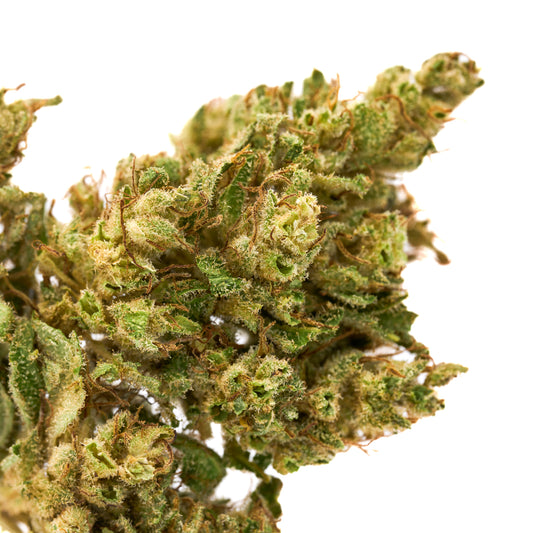

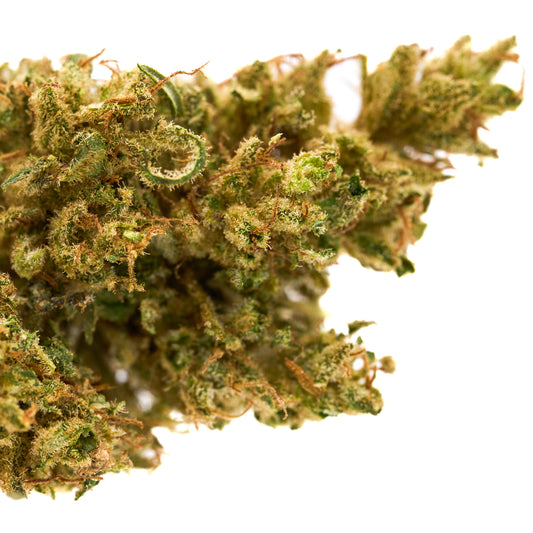

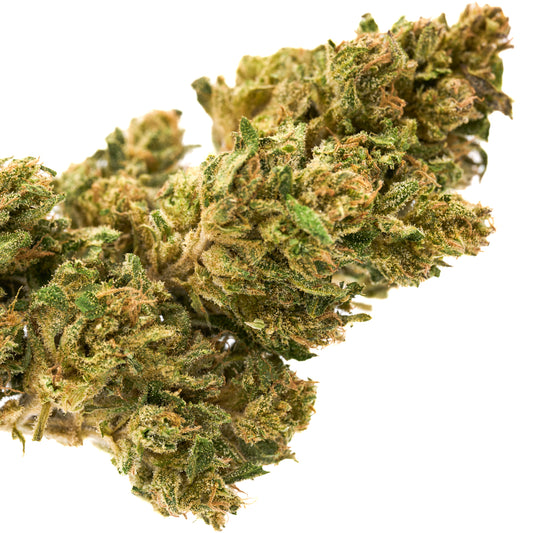



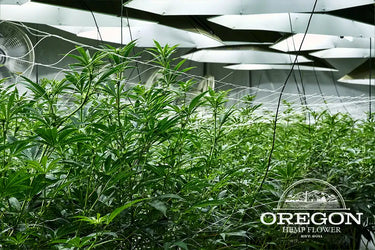

Leave a comment
Please note, comments need to be approved before they are published.